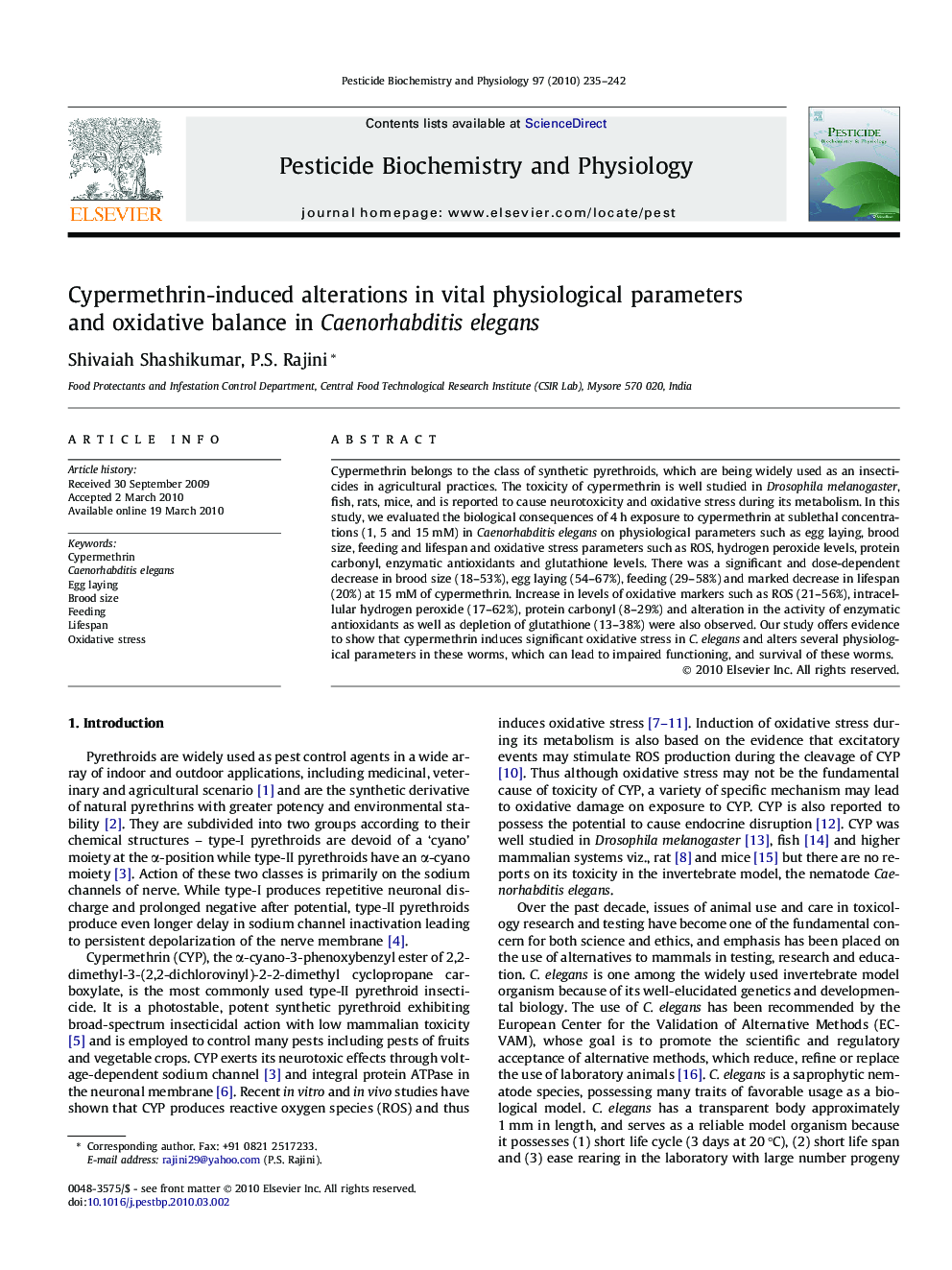| Article ID | Journal | Published Year | Pages | File Type |
|---|---|---|---|---|
| 2009634 | Pesticide Biochemistry and Physiology | 2010 | 8 Pages |
Abstract
Cypermethrin belongs to the class of synthetic pyrethroids, which are being widely used as an insecticides in agricultural practices. The toxicity of cypermethrin is well studied in Drosophila melanogaster, fish, rats, mice, and is reported to cause neurotoxicity and oxidative stress during its metabolism. In this study, we evaluated the biological consequences of 4Â h exposure to cypermethrin at sublethal concentrations (1, 5 and 15Â mM) in Caenorhabditis elegans on physiological parameters such as egg laying, brood size, feeding and lifespan and oxidative stress parameters such as ROS, hydrogen peroxide levels, protein carbonyl, enzymatic antioxidants and glutathione levels. There was a significant and dose-dependent decrease in brood size (18-53%), egg laying (54-67%), feeding (29-58%) and marked decrease in lifespan (20%) at 15Â mM of cypermethrin. Increase in levels of oxidative markers such as ROS (21-56%), intracellular hydrogen peroxide (17-62%), protein carbonyl (8-29%) and alteration in the activity of enzymatic antioxidants as well as depletion of glutathione (13-38%) were also observed. Our study offers evidence to show that cypermethrin induces significant oxidative stress in C. elegans and alters several physiological parameters in these worms, which can lead to impaired functioning, and survival of these worms.
Related Topics
Life Sciences
Agricultural and Biological Sciences
Agronomy and Crop Science
Authors
Shivaiah Shashikumar, P.S. Rajini,
